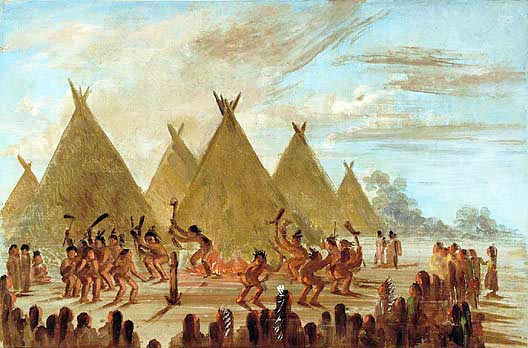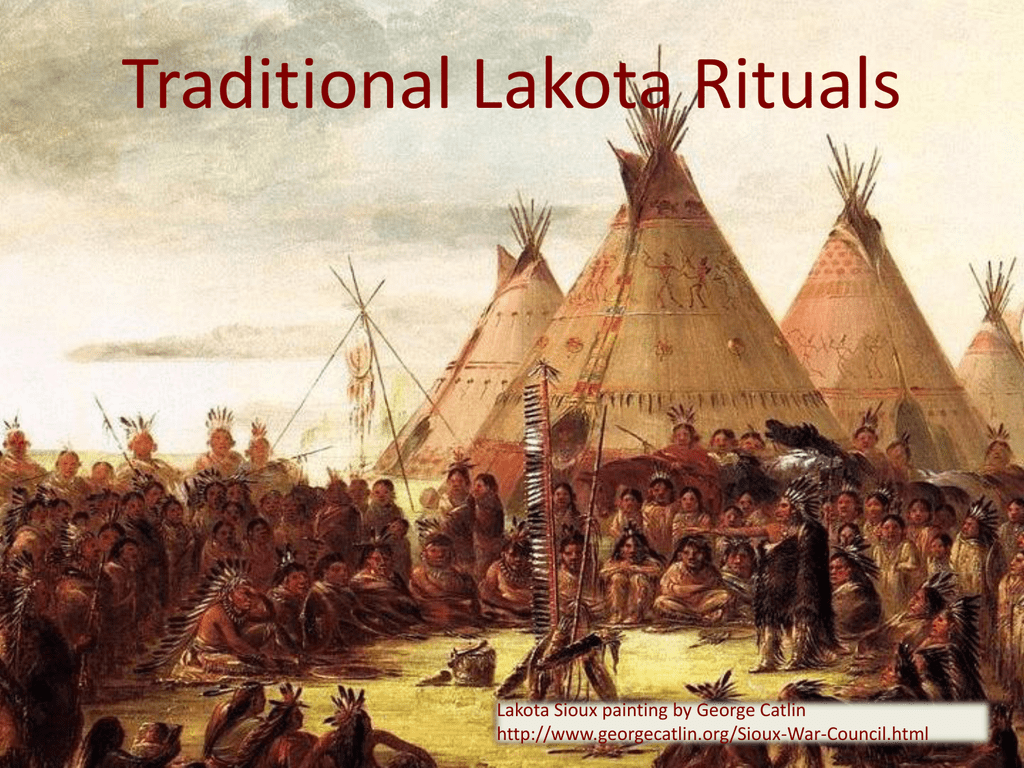
Whispers of Wakan Tanka: The Enduring Spirituality of the Lakota Sioux
In the vast, undulating landscapes of the North American plains, where the wind carries the echoes of buffalo hooves and ancient songs, lives a spiritual tradition as profound and resilient as the earth itself. The Lakota Sioux, a people deeply intertwined with their environment, have for centuries practiced a vibrant and complex spirituality that underpins every aspect of their existence. Far from a relic of the past, their beliefs and ceremonies continue to breathe life into their communities, offering a powerful antidote to the fragmentation of the modern world.
At the heart of Lakota spirituality lies the concept of Wakan Tanka, often translated as "Great Mystery" or "Great Spirit." This is not a singular, anthropomorphic deity, but rather an all-encompassing sacred force that permeates the entire universe. It is the life-giver, the source of all power and wisdom, present in every rock, tree, animal, and human being. This pervasive sacredness fosters an inherent reverence for all creation, encapsulated in the profound phrase, "Mitakuye Oyasin – All My Relations." This isn’t merely a greeting; it’s a philosophical cornerstone, a recognition of the interconnectedness of all living things, from the smallest insect to the most distant star. Humans are not seen as separate from or superior to nature, but as an integral part of a vast, sacred web of relationships.

This worldview shapes daily life and informs the seven sacred rites, gifted to the Lakota people by the mythical White Buffalo Calf Woman centuries ago. These ceremonies are not just rituals; they are living prayers, pathways to purification, healing, and connection with Wakan Tanka. They are acts of humility, sacrifice, and profound spiritual commitment, designed to maintain balance within the individual, the community, and the cosmos.
One of the most foundational and frequently practiced ceremonies is the Inipi, or Sweat Lodge. More than a simple sauna, the Inipi is a powerful ritual of purification and renewal. Participants gather in a small, dome-shaped lodge, often made of willow branches covered with blankets or tarps, symbolizing the womb of Mother Earth. Hot stones, heated in an external fire, are brought into the center pit, and water is poured over them, creating a thick, cleansing steam. In the darkness, prayers are offered, songs are sung, and participants share their hearts, seeking guidance, healing, and connection. The intense heat and steam are believed to cleanse not only the body but also the mind and spirit, allowing individuals to emerge reborn and reconnected to the sacred. As one Lakota elder explained, "The Inipi is going back to the beginning, to the darkness where we were formed, to be made new again by the breath of the Creator."
For those seeking deeper personal guidance, the Hanbleceya, or Vision Quest, is a transformative journey. Traditionally undertaken by young men transitioning into adulthood, but now open to many, the Hanbleceya involves spending days and nights alone on a sacred hill, fasting and praying, exposed to the elements. The purpose is to humble oneself before Wakan Tanka, to listen for guidance from the spirit world, and to receive a personal vision or spiritual understanding that will illuminate one’s path in life. It is a profound test of endurance and faith, stripping away the distractions of the material world to reveal one’s true self and purpose. The visions, often symbolic, are interpreted with the guidance of an elder or spiritual leader, providing direction for the individual’s journey.
Perhaps the most iconic and, historically, the most misunderstood of the Lakota ceremonies is the Wiwanyang Wacipi, or Sun Dance. This four-day communal ceremony, traditionally held in late spring or early summer, is a profound act of sacrifice and prayer for the well-being of the entire community and the world. Dancers, often fasting for the duration, endure physical hardship as an offering to Wakan Tanka. The central element is the sacred cottonwood tree, erected in the center of the dance arena, symbolizing the Tree of Life and the axis mundi connecting heaven and earth. Participants dance facing the sun, often for hours, seeking a direct connection to the Great Mystery.
In its most traditional form, the Sun Dance involves a piercing ceremony, where small wooden skewers are inserted into the chest or back and attached by ropes to the central pole. Dancers then pull against these ropes until the skewers release. This act of self-sacrifice is not about pain for its own sake, but about offering one’s own flesh and blood for the healing and renewal of the people and the earth. It is an ultimate expression of humility and selflessness, a direct participation in the cycle of life, death, and rebirth.
For decades, the Sun Dance, along with other Indigenous spiritual practices, was outlawed by the U.S. government, forcing it underground. This suppression was part of a broader policy aimed at assimilating Native peoples by eradicating their cultures and spiritual beliefs. Children were forced into boarding schools, forbidden to speak their native languages or practice their traditions. Yet, against immense odds, the Lakota people preserved their sacred ways, often in secret, passing down knowledge through generations. The resilience of the Lakota spirit in maintaining these ceremonies is a testament to their profound spiritual strength. Since the American Indian Religious Freedom Act of 1978, which ostensibly protected Indigenous religious practices, the Sun Dance has seen a powerful resurgence, drawing participants from around the world and serving as a beacon of cultural revitalization.
Central to the continuation of these traditions are the Lakota elders and medicine people. They are the knowledge keepers, the living libraries of their people’s history, language, songs, and ceremonies. Through oral tradition, they transmit the wisdom of generations, teaching the younger ones the proper protocols, the meaning of the symbols, and the responsibilities that come with participating in these sacred ways. Their guidance is invaluable in navigating the complexities of spiritual life and ensuring the integrity of the ceremonies.
In the contemporary world, Lakota spirituality continues to evolve while holding fast to its ancient roots. It provides a powerful framework for addressing modern challenges such as poverty, addiction, and cultural loss. Returning to the ceremonies and the "Red Road" (the spiritual path) offers individuals a sense of identity, purpose, and community that is often lacking in mainstream society. Younger generations are actively engaged in learning their language and traditions, ensuring that the whispers of Wakan Tanka will continue to resonate for future generations.

The Lakota spiritual tradition offers a profound message to the wider world: a message of interconnectedness, respect for nature, humility, and the power of sacrifice for the greater good. In a time of environmental crisis and societal division, the Lakota concept of "Mitakuye Oyasin – All My Relations" stands as a timeless call to remember our place within the vast web of life, to honor all creation, and to walk in a sacred manner upon this Earth. Their enduring ceremonies are not just a window into a rich cultural past; they are living testaments to the strength of the human spirit and a vital pathway to healing for all.


